Subphylum Vertebrata Family Ranidae Scientific name Rana clamitans Higher classification Rana | Phylum Chordata Order Anura Rank Species | |
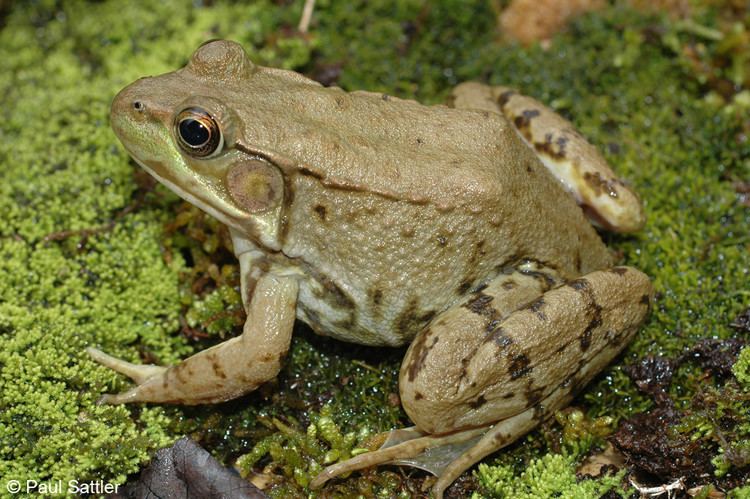 | ||
Similar Frog, Amphibians, Northern green frog, Lithobates, Rana | ||
Northern green frog lithobates clamitans melanota
The green frog (Lithobates clamitans or Rana clamitans) is a species of frog native to the eastern half of the United States and Canada. The two subspecies are the bronze frog and the northern green frog.
Contents
- Northern green frog lithobates clamitans melanota
- Lithobates clamitans green frog in berloga pond
- Description
- Habitat
- Behavior
- Reproduction
- Feeding
- Conservation status
- Subspecies
- References
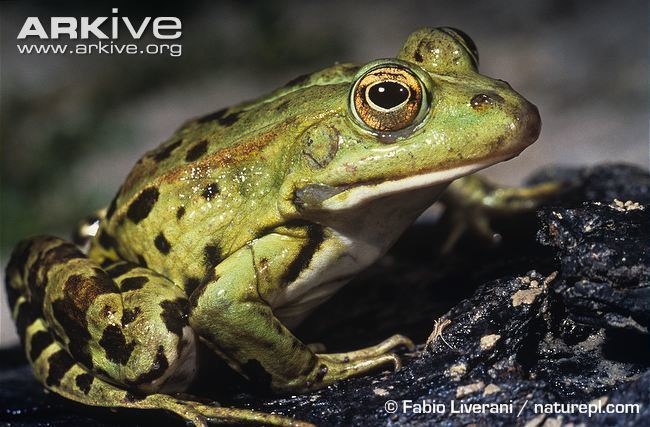
Lithobates clamitans green frog in berloga pond
Description
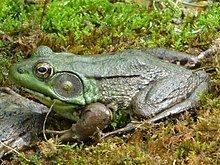
This species is a mid-sized true frog. Adult green frogs range from 5–10 cm (2.0–3.9 in) in body length (snout to vent, excluding the hind legs). The typical body weight of this species is from 28 to 85 g (0.99 to 3.00 oz). The sexes are sexually dimorphic in a few ways: mature females are typically larger than males, the male tympanum is twice the diameter of the eye, whereas in females, the tympanum diameter is about the same as that of the eye, and males have bright yellow throats. The dorsolateral ridges, prominent, seam-like skin folds that run down the sides of the back, distinguish the green frog from the bullfrog, which entirely lacks them.
Habitat
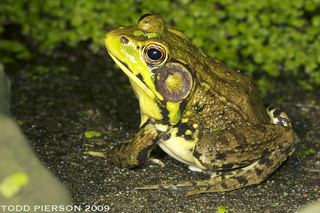
Green frogs live wherever shallow freshwater ponds, road-side ditches, lakes, swamps, streams, and brooks are found. Most often seen resting along the shore, they leap into the water when approached. By inhabiting an ecotone, in this case the terrestrial and aquatic habitat boundary, green frogs (and other aquatic ranid frogs), by employing a simple leap, leave behind their many and faster terrestrial enemies that cannot similarly cross that boundary.
Behavior
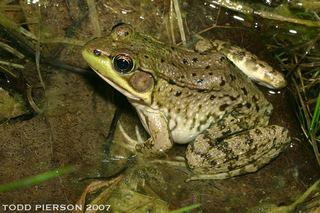
Adult green frogs are highly aquatic, but juveniles will sometimes go overland when the grass and soil are wet. This species is usually diurnal, although their calls are sometimes heard at night during hotter weather.
Reproduction
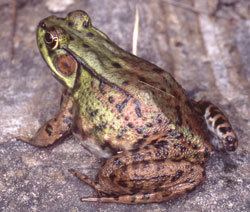
Green frogs breed in semipermanent or permanent fresh water. Males call from and defend territories. The distinctive call sounds like a plucked banjo string, usually given as a single note, but sometimes repeated.
The breeding season is from April to August.
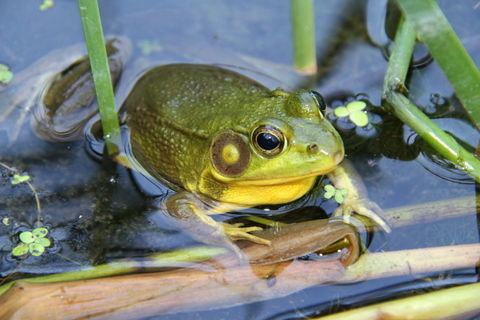
Actual mating involves amplexus, whereby the male grasps the female with his forelimbs posterior to her forelimbs. The female releases her eggs and the male simultaneously releases sperm which swim to the egg mass. Fertilization takes place in the water. A single egg clutch may consist of 1000 to 7000 eggs, which may be attached to submerged vegetation.
Green frog tadpoles are olive green and iridescent creamy-white below. Metamorphosis can occur within the same breeding season or tadpoles may overwinter to metamorphose the next summer. Males become sexually mature at one year, females may mature in either two or three years.
Feeding
Green frogs will attempt to eat any mouth-sized animal they can capture, including insects, spiders, fish, crayfish, shrimp, other frogs, tadpoles, small snakes, birds, and snails. Tadpoles graze on algae and water plants.
Conservation status
The green frog is one of the most abundant frogs wherever it occurs and has no known problems. Green frogs are protected by the law in some US states.
Subspecies
The two recognized subspecies of L. clamitans are:
